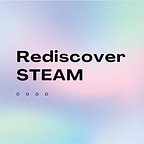Barbara Askins, Physical Chemist & First Woman ‘National Inventor of the Year’
No one could have predicted the magnitude of the impact Barbara Askins’s invention would have on the technological world. This was all the more enhanced by her position as a woman in the scientific domain, which was heavily male-dominated at the time. Contrary to prevailing stereotypes, her career started after she had a family and sent her two kids to school. While a working, married woman was typically looked down upon, this social stigma did not hinder Askins or stop her from leaving a prolific impact on society. Her invention aided NASA in the rendering of cosmological images and heavily influenced x-ray radiology in the medical field.
Askins was born in Belfast, Tennessee in 1939, and she began her career as a teacher. During this period, she married and had two children, and it was only once they were both in school that she returned to college to complete her bachelor's in chemistry. Having successfully achieved that, she went on to further study and earned her master's degree, also in chemistry. In 1975, she was offered a job at the prestigious Marshall Space Flight Center. At this institution, she was tasked with finding a method to improve astronomical and geological photos taken from space. At the time, space exploration was a budding field, and photos contained a wealth of information about the composition of galaxies and planets, however, they were hindered by their quality. Enter Barbara Askins. She created a method of using radioactive sources to enhance under-exposed areas and negatives, the impressiveness of this technique amplified by the ability to perform it after the images have been developed. The method works by creating a second print, known as an autoradiograph, which reproduces the image but with greater contrast and density. Askins’ invention had an unprecedented impact on space technology, as it made the invisible aspects of current images visible. Thus, scientists were able to point their cameras and telescopes at deeper, unexplored parts of the universe and recover the secrets they held through Askins’ invention.
Her invention was so successful that in 1978, just three years after she started working for the Marshall Space Flight Center, she patented it (U.S patent №4,101,780), and NASA continued to employ its use for further research and development. In addition to aiding space exploration, it had a profound impact back down on Earth in the medical industry. Due to its ability to enhance previously invisible or fuzzy areas, it promoted developments in X-ray technology. This massively increased the exposure in x-ray images, even images that were up to 96% underexposed. The results of this development meant that patients were exposed to significantly less radiation to achieve what was arguably a better effect. Due to the incredibly ionizing nature of x-rays, second only in damage to gamma rays, her method exponentially increased the safety of radiology and allowed for better patient diagnoses. Thus, Barbara Askins’ invention not only revolutionized space exploration but also improved the quality and safety of radiology for people down on Earth. The culmination of her inventive genius was her receiving the title of the ‘National Inventor of the Year.’ Not only was she one of the first winners of this title, as the award was only created in 1974, but she was the first woman to receive it. She was the sole inventor of the project, not a male in sight with regard to her achievement and scientific prowess. Thus, she serves as an exceptional role model, showcasing the talent and impact women can bring to the scientific community.
by Laura Jewsbury
References
“Barbara Askins: Inventor of a New Film Developing Method.” Famous Women Inventors, 2008, www.women-inventors.com/Barbara-Askins.asp. Accessed 1 June 2022.
“Barbara Askins.” Lemelson-MIT, 2010, lemelson.mit.edu/resources/barbara-askins. Accessed 1 June 2022.
“Barbara Askins.” National Aeronautics and Space Administration Wiki, 2016, nasa.fandom.com/wiki/Barbara_Askins. Accessed 1 June 2022.
